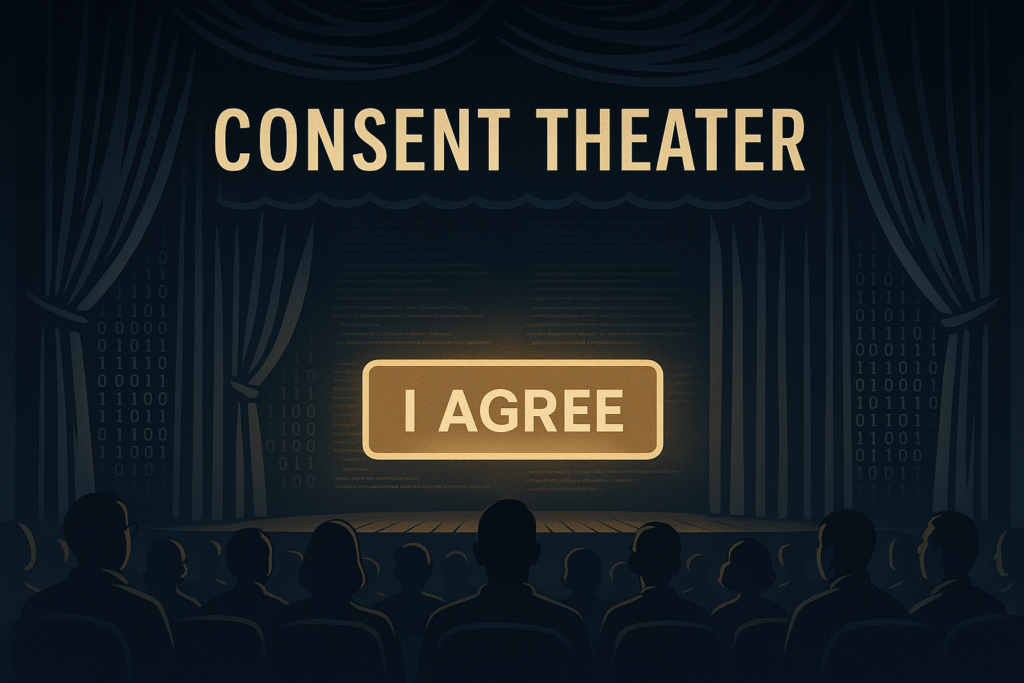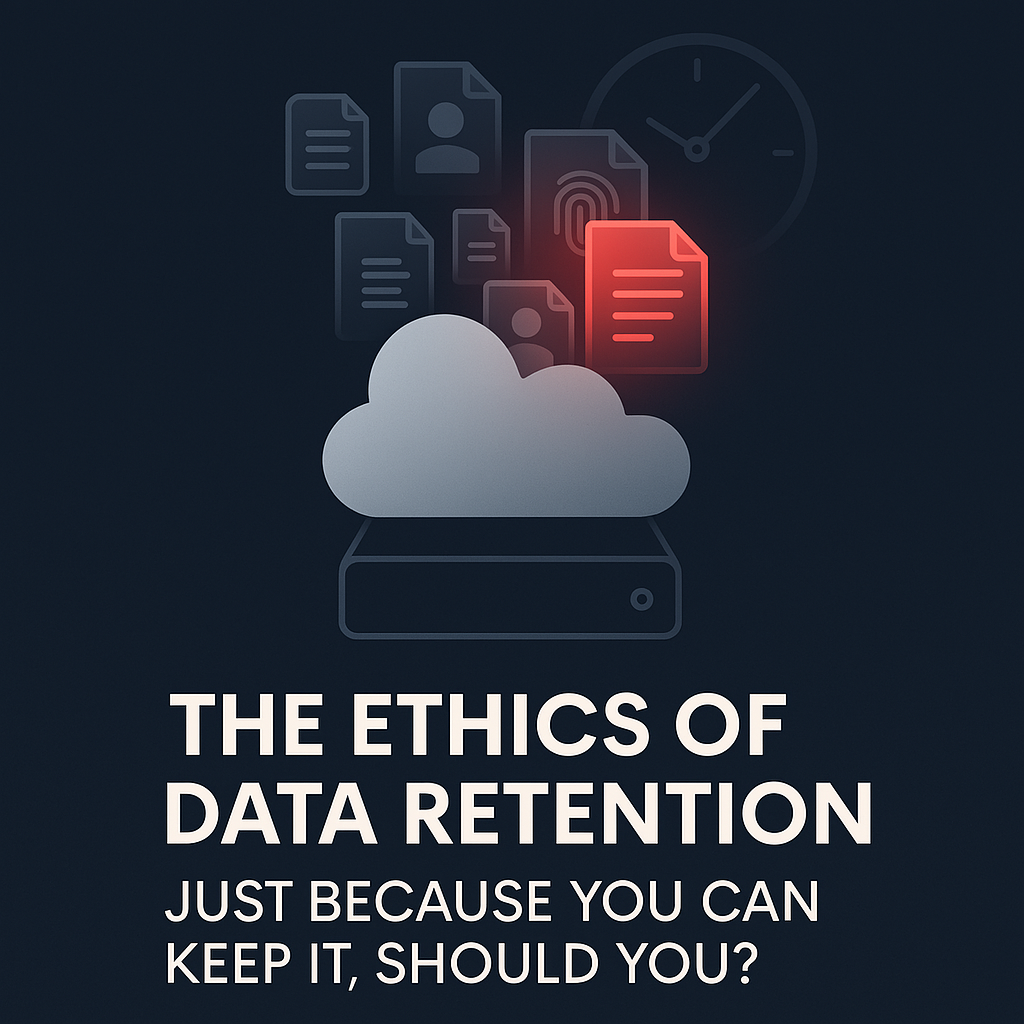Published in: Ethics
Estimated reading time: 5 minutes
Introduction
We’ve all done it—scrolled to the bottom of a privacy policy, clicked “I Agree,” and moved on. But beneath that small act lies a growing problem in the world of digital ethics and privacy law: the illusion of meaningful consent. While companies proudly point to their “transparency,” users are left in a play of consent theater—where the performance of permission masks the reality of power imbalance.
What Is Consent Theater?
“Consent theater” refers to the ritualized process of obtaining user agreement that checks legal boxes without genuinely informing or empowering users. It’s a phrase increasingly used by privacy scholars and ethicists to describe how organizations maintain plausible deniability while still collecting and exploiting personal data.
The signs of consent theater include:
- Lengthy, unreadable policies
- Pre-checked boxes or opt-out models
- Bundles of permissions that you can’t separate
- Take-it-or-leave-it platforms where refusing means exclusion
Why Privacy Policies Fail the User
Privacy policies were originally intended to offer transparency and help users make informed decisions. In practice, they often serve companies more than consumers.
- Unreadable: Most policies are written at a college reading level and span thousands of words.
- Non-negotiable: Users rarely have any real choice or influence over the terms.
- Time-wasting: A 2008 study estimated it would take the average person 244 hours per year to read all the privacy policies they encounter.
Rather than empowering users, these documents shift responsibility onto them, assuming that clicking “accept” equals informed, voluntary consent.
The Legal Landscape: Is Consent Enough?
Most modern privacy laws—from the GDPR in Europe to the CCPA in California—lean heavily on the concept of user consent. But even regulators are starting to question whether current models of consent are meaningful.
The GDPR, for instance, requires that consent be:
- Freely given
- Specific
- Informed
- Unambiguous
Yet in many real-world cases, these standards aren’t met—especially on mobile apps, websites with dark patterns, or platforms that nudge users toward “agreeing.”
What Ethical Consent Could Look Like
True ethical consent goes beyond checkboxes. It should be:
- Contextual: Let users give or withhold permission in real time, with clear consequences.
- Reversible: Make opting out as easy as opting in.
- Comprehensible: Use plain language and visual cues.
- Minimalist: Only collect what’s truly necessary.
Some companies are exploring “just-in-time notices,” layered policies, and interactive privacy settings to make consent more user-friendly.
Conclusion: Time for a Rewrite
Consent theater exposes the disconnect between legal compliance and ethical responsibility. If privacy is truly a right, then we need less performance and more protection. Users deserve better than a façade of choice—they deserve consent that is real, informed, and fair.
Liked this piece?
Subscribe to The Privacy Brief for weekly insights into privacy law, digital ethics, and emerging policy trends.


